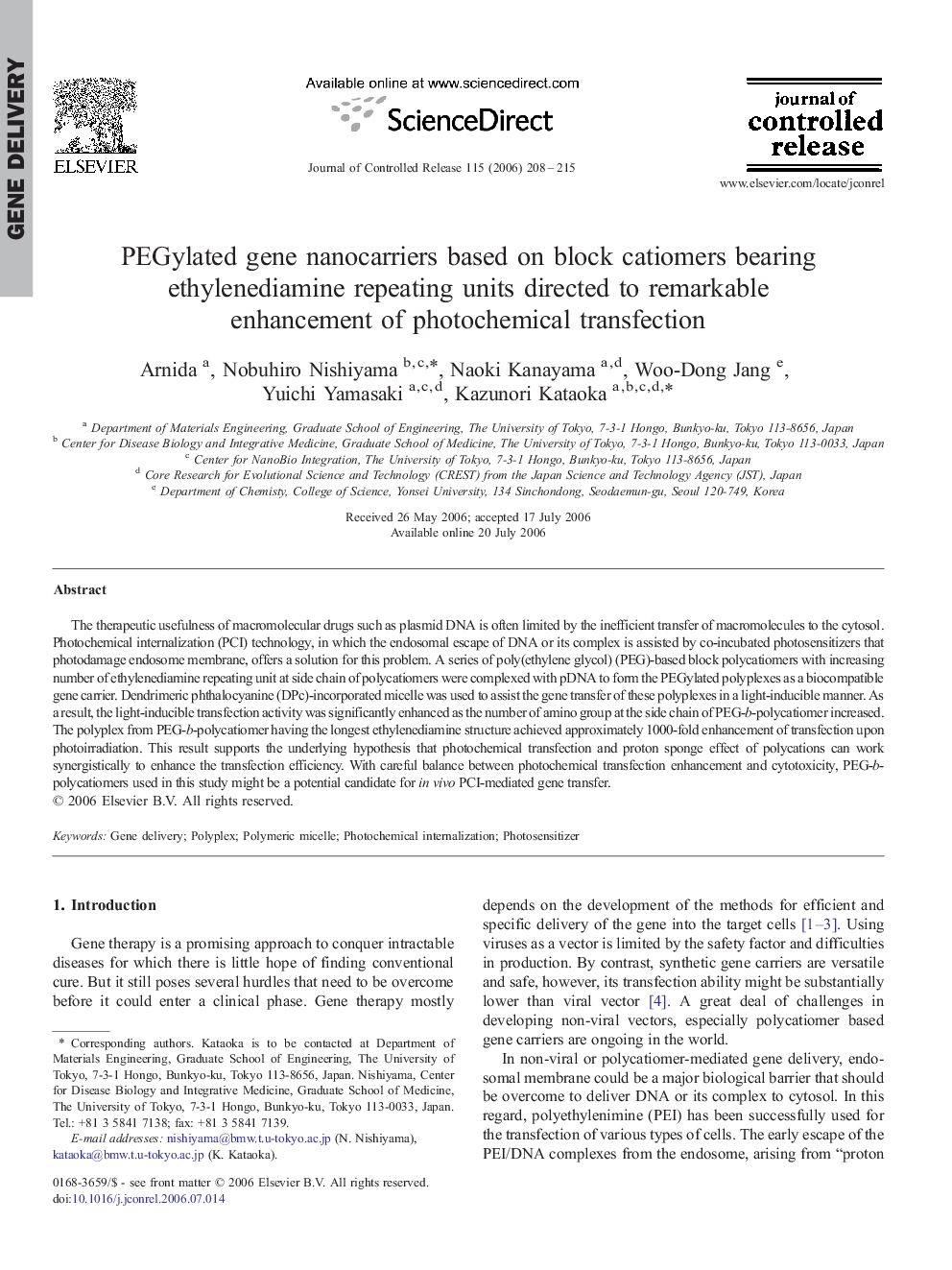| کد مقاله | کد نشریه | سال انتشار | مقاله انگلیسی | نسخه تمام متن |
|---|---|---|---|---|
| 1427241 | 986854 | 2006 | 8 صفحه PDF | دانلود رایگان |

The therapeutic usefulness of macromolecular drugs such as plasmid DNA is often limited by the inefficient transfer of macromolecules to the cytosol. Photochemical internalization (PCI) technology, in which the endosomal escape of DNA or its complex is assisted by co-incubated photosensitizers that photodamage endosome membrane, offers a solution for this problem. A series of poly(ethylene glycol) (PEG)-based block polycatiomers with increasing number of ethylenediamine repeating unit at side chain of polycatiomers were complexed with pDNA to form the PEGylated polyplexes as a biocompatible gene carrier. Dendrimeric phthalocyanine (DPc)-incorporated micelle was used to assist the gene transfer of these polyplexes in a light-inducible manner. As a result, the light-inducible transfection activity was significantly enhanced as the number of amino group at the side chain of PEG-b-polycatiomer increased. The polyplex from PEG-b-polycatiomer having the longest ethylenediamine structure achieved approximately 1000-fold enhancement of transfection upon photoirradiation. This result supports the underlying hypothesis that photochemical transfection and proton sponge effect of polycations can work synergistically to enhance the transfection efficiency. With careful balance between photochemical transfection enhancement and cytotoxicity, PEG-b-polycatiomers used in this study might be a potential candidate for in vivo PCI-mediated gene transfer.
Journal: Journal of Controlled Release - Volume 115, Issue 2, 10 October 2006, Pages 208–215